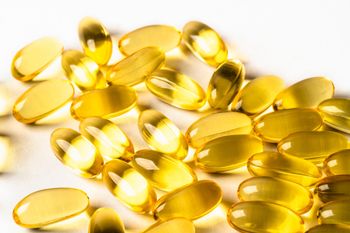
- Nutritional Outlook Vol. 17 No. 10
- Volume 17
- Issue 10
A Look at DHA Health Claims in the Broader Omega-3 Category
Baby food and pet food still dominate the DHA market.
Consumer awareness of omega-3 fatty acids-and the omega-3 fatty acid DHA, in particular-has grown over the years. DHA has enjoyed a higher profile as result of increased research on its potential health benefits; however, recent tightening up of claims legislation in some global regions has, in some cases, caused decreased use of specific health-benefit claims for DHA and other omega-3 ingredients. Also, while claims such as “high in omega-3s,” “contains omega-3s,” and “rich in omega-3s” persist, claims linking omega-3s to specific cardiovascular, cognitive, eye-health, and joint-health benefits are much less common, with companies instead relying more on consumer knowledge about the wide range of potential benefits attributed to these nutrients.
Food and drink launches marketed on their DHA content amounted to less than 1% of the total global product launches that Innova Market Insights recorded in the 12 months up to the end of August 2014. This figure rises to nearly 2% of total launches if more-general omega-3 claims are also included.
Product launches touting DHA and/or omega-3 fortification span most product sectors and include omega-3s from a wide range of sources, including oilseeds, vegetables, and fish, and marine products such as algae.
DHA Marketing Highest in Asia
There are some significant regional differences in DHA and omega-3 marketing, however. Asia, for instance, is the leader in terms of DHA claims. In Asia, products featuring DHA claims account for 1.8% of total food and drink launches; in fact, more DHA claims were used than general omega-3 fatty acid claims, which appear on just 1.1% of new product launches.
This could imply a greater ingredient awareness among Asian consumers, who seek out specific omega-3 ingredients. Asia in fact accounts for nearly 64% of all global DHA product-launch claims-well ahead of the United States and Western Europe, which each account for 9% of total launches featuring DHA claims.
Baby Food and Pet Food: DHA Claims Leaders
Baby food is by far the most frequent user of DHA claims, accounting for 80% of the global total and ahead of pet food, which accounts for 10.5% of product launches with DHA claims. Other types of product launches account for the remaining 10% of the DHA claims market and is led by fish and seafood (oily fish is increasingly marketed as naturally containing DHA and/or omega-3 fatty acids), dairy products (including yellow fats), sauces and seasonings, and bakery products.
General Omega-3 Claims
While DHA claims remain high in baby food and pet food, other product categories rely much more highly on general claims of omega-3 fatty acid content. Baby and pet food still account for 45% of general omega-3 claims, while the remaining 55% of general omega-3 claims is attributed to other products, again led by fish and seafood. Sauces and seasonings, cereal products (mainly cereal bars), dairy products, and bakery products are the next biggest users of general omega-3 claims.
Product Types
A wide range of fish products is now marketed on naturally high-DHA or omega-3 fatty acid content, including traditional canned lines, as well as newer pouched fish or fish meals, frozen products, and even preserved lines such as the Ahi Tuna Jerky launched in the U.S. market in 2014, marketed as containing DHA.
In the dairy sector, organic specialist Stonyfield (Dannon) is the leader in mainstream omega-3 products. Since introducing a product range in 2011, the company has built on the concept to offer whole milk, 2% reduced-fat milk, and low-fat chocolate milk. All are marketed as rich in DHA and EPA to support “heart, brain, and eye health.” The company’s YoToddler and YoBaby yogurts are also advertised as containing DHA.
Rival organic dairy company Horizon (WhiteWave) makes even more overt use of DHA content for its DHA Omega-3 milks range, including whole, reduced-fat, and fat-free products, as well as two flavored chocolate and vanilla lines. The packaging prominently states “supports brain health” directly below the product name.
Meanwhile, in Canada, Saputo-owned Neilson offers its Dairy Oh microfiltered milk, obtained from cows fed a special diet high in DHA and marketed as supporting the normal physical development of the brain.
There is also some ongoing interest in DHA in the mainstream soft drinks market. Coca-Cola’s Minute Maid offers a Pomegranate Blueberry Fruit Juice Blend containing omega-3/DHA and claiming to “support brain and body.” An interesting launch early in 2014 (and since discontinued) was the Mint Melon BrainBoost Drinkable Yogurt from Skyland, claiming to support brain function and cognitive development.
Although we’ve seen less product activity in DHA and omega-3 rich/fortified products in recent years-and particularly in Europe following difficulties stemming from health claims regulations-clearly there is still interest in the sector. As promising as some of these ingredients are, marketers are still grappling with their share of challenges, including the fact that some ingredients are better researched than others, and figuring out how to market products naturally high in DHA versus products for which omega-3 has been added as an ingredient.
Articles in this issue
about 11 years ago
Nutritional Outlook's Best of 2014: Arla Foods Ingredientsabout 11 years ago
Nutritional Outlook's Best of 2014: US Hemp Oil / CannaVestabout 11 years ago
Nutritional Outlook's Best of 2014: DianaPlantSciencesabout 11 years ago
Nutritional Outlook's Best of 2014: Flax Council of Canadaabout 11 years ago
Nutritional Outlook's Best of 2014: Global ID Groupabout 11 years ago
Nutritional Outlook's Best of 2014: ARTY Waterabout 11 years ago
Nutritional Outlook's Best of 2014: Chapulabout 11 years ago
Nutritional Outlook's Best of 2014about 11 years ago
Gender Gap Closing among U.S. Supplement Users, 2014 Survey ShowsNewsletter
From ingredient science to consumer trends, get the intel you need to stay competitive in the nutrition space—subscribe now to Nutritional Outlook.





